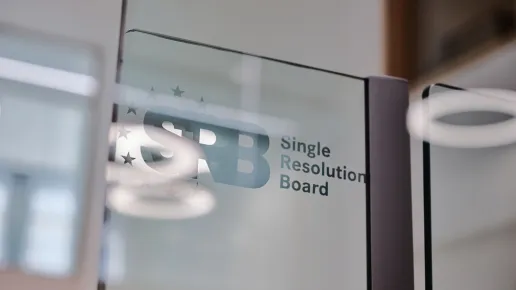Once the Banking Union is completed there is little reason for ring-fencing writes Elke König
The European Commission’s risk reduction package proposes to implement important international provisions in order to reduce risks and achieve further progress towards the completion of the Banking Union. These proposals also suggest partially waiving certain cross-border capital and liquidity requirements to address the fragmentation of national banking markets.
The SRB welcomes the Commission’s efforts to make progress on the completion of the Banking Union and to enhance resolvability of big banks with the implementation of TLAC and the introduction of a creditor hierarchy. At this point, we should take a step back and identify further elements, which impede the completion of a fully-fledged Banking Union.
The Single Supervisory Mechanism tasked with reducing the occurrence of crises ex-ante and the Single Resolution Mechanism equipped with common rules for the orderly wind-down of a failing bank ex-post have proven to be two important pillars of Banking Union. The missing third pillar, a common European Deposit Insurance Scheme with appropriate safeguards is a pre-requisite for the completion of the Banking Union, as it would harmonize the level of depositor protection throughout all Member States.
However, efforts are also needed in other domains. In this context, the divergence of national insolvency laws is a major obstacle towards a fully-fledged Banking Union. In the current system, the counterfactual of no-creditor-worse off (NCWO) might produce different results in different countries depending on the national insolvency regime and thus negatively impact on the orderly wind-down of a bank. The SRB therefore strongly encourages legislators to harmonise national insolvency laws, in order to create a level-playing field.
This harmonisation would facilitate resolution planning for cross-border banking groups within the Banking Union. For these banking institutions, the SRB’s Internal Resolution Teams (IRT), assess a bank’s critical functions and business model as a whole. Based on this assessment, the SRB determines the preferred resolution strategy and the appropriate amount of MREL for the banking group as a whole and at entity level to allow for potential internal upstreaming of losses and downstreaming of capital. However, we must be aware, that in the current framework insolvency is clearly entity-specific as is NCWO. It is crucial to bear in mind that without statutory or at least contractual changes to this framework, the focus during the resolution of banking groups will have to remain at entity level and thus limit the scope of national or cross-border waivers. In this domain, the legislators are clearly in the driving seat. At the same time, we should explore alternative means of internal loss absorption with appropriate safeguards, so that a single-point-of-entry strategy across Banking Union Member States could be effectively carried out.
While harmonised rules certainly help to ensure effective supervision and resolution, the consistent enforcement of these rules and close coordination and cooperation among authorities are equally decisive for the functioning of the Banking Union. Hence, the cooperation of ECB and SRB must be improved even further, and the updated Memorandum of Understanding will help in this regard. Moreover, the cooperation and monitoring between the individual national competent and resolution authorities and their interaction with the European level requires further intensified efforts. In this way, it can be expected that the trust of national authorities in the effectiveness of the European supervisory and resolution regime would be considerably strengthened.
Overcoming the outlined obstacles to the fragmentation of the Banking Union can be a major contributor to financial stability, enhance resolvability and depositor protection and help build trust and confidence in the functioning of the Banking Union among the different national authorities. Once the Banking Union has been completed with the full potential of all three pillars realised, Member States and their respective supervisory and regulatory authorities would have little reason to maintain any ring-fencing practice or to erect barriers to the free movement of capital and liquidity across national borders within the Banking Union.
Contact our communications team
Recent news

The SRB recently published two important documents clarifying its expectations of banks regarding operational resolvability: the Operational guidance...

The body responsible for managing banks in crisis in Europe is celebrating its 10th anniversary and claims that Popular's 2017 resolution has been...

In last June, Parliament and Council have clinched a political deal that is applicable to all the EU member states, and which can be seen as a step...



